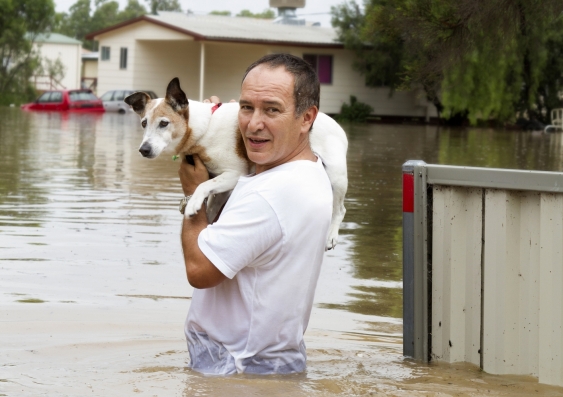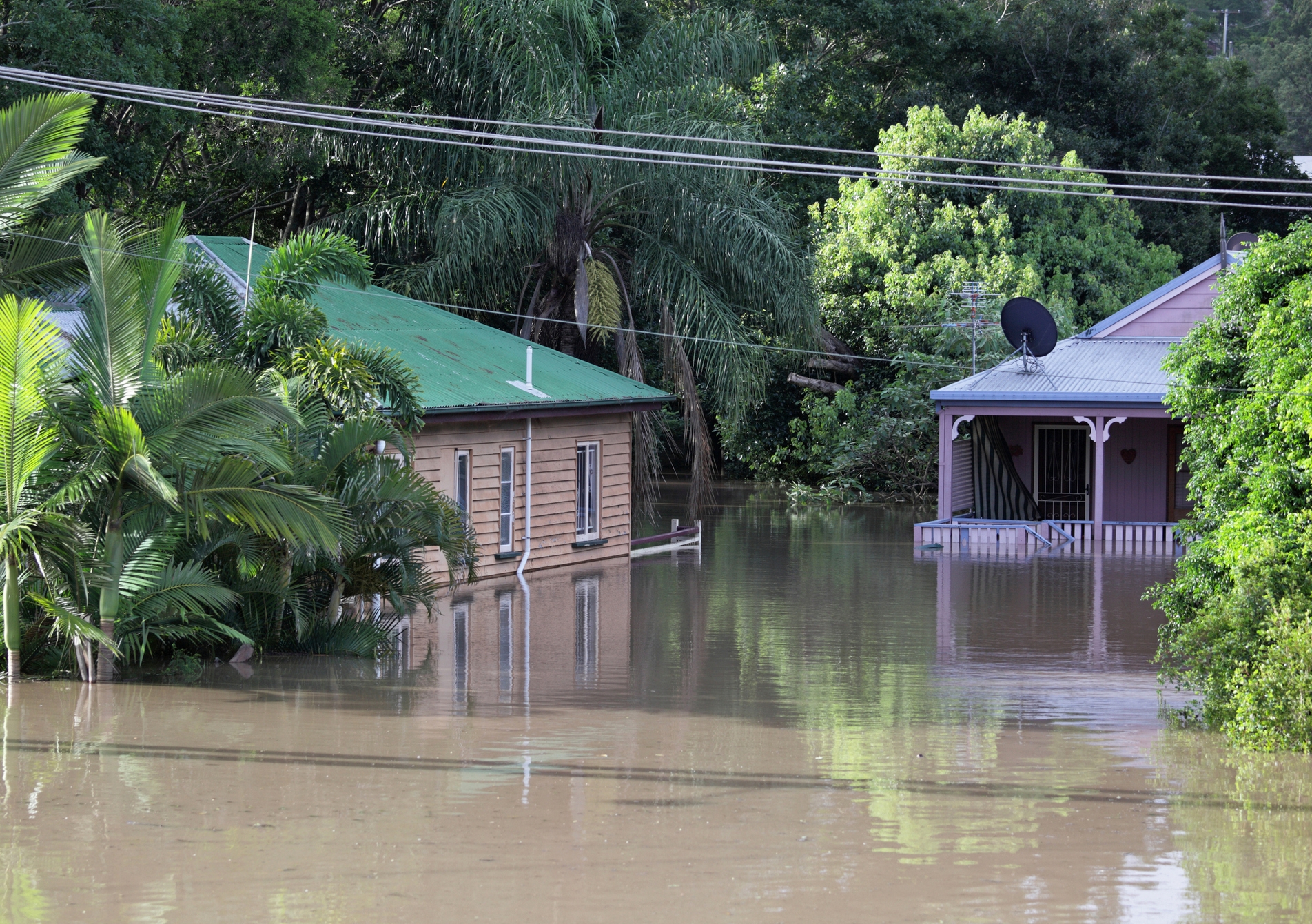Why are insurance costs going up right now?
A UNSW Business School expert explains why rising insurance premiums are set to join other affordability pressures for Australians.
A UNSW Business School expert explains why rising insurance premiums are set to join other affordability pressures for Australians.

Kate Bettes
UNSW Business School
+61407701034
k.bettes@unsw.edu.au
Had to hold back a strangled cry when you last looked at your insurance premium costs? Impacts such as the changing climate are already being felt in areas such as home insurance payments, with bodies such as the Actuaries Institute among those warning that some Australian homes could soon be uninsurable, opens in a new window.
“Systematic shocks to insurance, such as climate change, are the most challenging threats to face for both individuals and insurers,” explains Michael Sherris, Professor in the School of Risk and Actuarial Studies, UNSW Business School, opens in a new window, and Chief Investigator and Director of Industry Engagement at ARC Centre of Excellence in Population Ageing Research (CEPAR).
“Insurers need to absorb the impact of shocks such as natural disasters. To do this, they need business models to finance expected and unexpected shocks to ensure they meet their obligations to individuals who have claims because of the shocks.
“But unfortunately, it is the individuals purchasing the insurance who will have to pay for the impact.”
Prof. Sherris explains why insurance costs are rising, how companies are trying to ‘shock-proof’ the system, and what individuals can do to minimise their insurance costs in the short run.
Prof. Sherris: The main types of insurance policies for individuals include home and contents, car (comprehensive or third party), life and health insurance.
Businesses can purchase insurance products for a range of risks, including liability, business interruption, and property and assets.
All of these are exposed to climate change events (natural disasters such as bushfires or wildfires, or extreme weather events like storms, and floods), and global warming, as well as inflation, and business interruptions such as the COVID-19 pandemic.
The important feature of inflation and climate-related risks is that these are largely systematic risks. This means they are so pervasive, they cannot be mitigated by risk management or diversifying providers’ insurance and investment portfolios. In short, they are likely to hit many insurance policies and industries at once.
This means that insurance premiums are certain to increase, it’s just a matter of by how much and when.
Prof. Sherris: Some insurances will be impacted more than others by climate change, just as some individuals and businesses are impacted more than others. Take, for example, the impact on properties located in flood-prone areas.

Those who have houses in flood-prone areas are more likely to pay higher home insurance premiums. Photo: Getty
While we have experienced increased floods and bushfires in recent years, climate change impacts are certainly longer term. These could lessen depending on how well we are able to control temperature increases through climate change mitigation: reductions of greenhouse gas emissions and fossil fuel, and other efforts towards sustainability.
Prof. Sherris: In contrast to climate change, inflation is something that impacts the cost of insurance regularly. It is likely to have a greater impact over coming years: something increased by the fallout from the pandemic.
Other issues include continuing issues with supply chains. Consider car insurance and the increasing cost for replacement car parts, or home insurance and building materials.
Prof. Sherris: Risks go up and down over time. Take the pandemic. During lockdowns, people were driving less and had less need for car insurance. They were also deferring health treatments, which should also have reduced their health premiums.
So, what does the future hold? We still don’t know the impact of long COVID and the possible impacts on health and life insurance. Similarly, unknown global temperatures, weather-related disasters and future pandemics could all see insurance prices fluctuate over time.
Prof. Sherris: The Australian Prudential Regulation Authority (APRA) recently stated that for the insurance industry 'supply chain disruptions, skills shortages, inflationary pressures and cyber risks are posing challenges within the general sector.’
Some of these are shorter term and some – like climate change risks – are longer term. These all add to the uncertainty that insurers must manage, which must be funded from raising premiums, or if through shareholder capital, then providing investors with lower profits and returns.

Supply chain disruptions could have impacts on areas like the car insurance industry. Photo: Unsplash
They will also impact reinsurance prices that insurers must pay to manage their aggregate risks, since they not only impact Australia but are international pressures on the insurance industry more broadly.
They place a renewed emphasis for insurers on capital and solvency. Reassuringly, APRA undertook stress tests of the Australian insurers following COVID, finding insurers well positioned to meet commitments to policyholders and minimum capital requirements.
Prof. Sherris: Insurance companies regularly review the cost rating of all its insurance types against factors like expected inflation and the potential impact of climate change. Refining this process to factor in physical risks in relation to the effects of climate change (such as having a home in a bushfire, heat wave or flood-prone area), has resulted in higher costs for many.
The increase in premiums will lead to an increase in underinsurance – something which is already a concern. Finding ways to spread these systematic risks, and to share the impact on premiums across a wider range of policyholders, is one way to make insurance more affordable for those individuals facing the highest premium increases.
The Australian Reinsurance Pool Corporation (ARPC) and the recently established Government Reinsurance pool for cyclones and related flood damage are one way that these costs are currently being managed by the insurance industry.
Prof. Sherris: Having a separate levy system to fund a minimum level of insurance coverage for extreme events, such as bushfires, floods and other climate risks and natural catastrophes, is a possibility, but it is likely to be challenging in the current environment.
Prof. Sherris: Increased insurance premiums will add to the financial pressures that many households in Australia are facing as a result of increasing interest rates, inflation in food prices, increases in energy costs, and more.
Similarly, when it comes to underwriting (the process of deciding on the conditions of pricing and policy for a customer), companies will have to consider the financial risks, and price accordingly for risk exposure.
All these affordability pressures are likely to increase the amount of underinsurance in Australia. This is already an issue since higher prices for goods and services usually lead to lower demand.
Prof. Sherris: There are a few things consumers can do:
Ask, is it a large or a small risk? When it comes to large risks, such as living in an area prone to sea level rise or flooding, it’s important to have coverage. But the costs can be reduced through a deductible at a level that can be managed.
When it comes to insurance, consider the cost of coverage and how much risk you can afford to finance from savings.

There are ways consumers can seek to minimise their insurance costs. Photo: Pexels
Make decisions about insurance coverage and how much risk to take for different types of insurance: You might choose to increase the deductible to reduce the cost of insurance. This might be helpful if you are driving fewer kilometres and can switch to an insurer or a policy which charges premiums based on mileage.
Review the coverage of all your insurances regularly. How much are you paying, and has it increased over time?
When renewing insurance, seek several quotes: When it comes to renewing insurance, just like for home loan interest rates, energy plans and mobile phone plans, it’s important to shop around and get multiple quotes.
You may very well find that moving to another insurer will produce a lower premium since your premiums may have increased if you’ve been with the same insurer for several years.
Consider a mutual insurer: Although there are very few mutual insurers in Australia, they can sometimes provide a better deal than for-profit insurers since they may not load the premium for profits and returns to shareholders.
Professor Michael Sherris is a professor in the School of Risk and Actuarial Studies, UNSW Business School, opens in a new window, and Chief Investigator and Director of Industry Engagement at ARC Centre of Excellence in Population Ageing Research. He can be reached for further comment at m.sherris@unsw.edu.au, opens in a new window